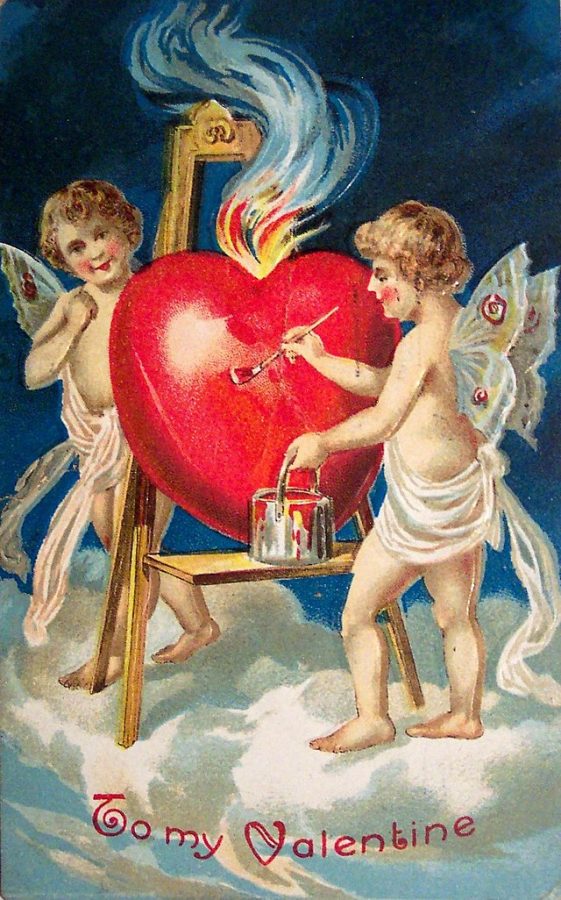How did Valentine’s Day begin?
Chordboard, Public domain, via Wikimedia Commons
Cupid’s Arrow is a famous symbol on Valentine’s Day. It represents finding love with someone. They are plastered all over cards, chocolate boxes, and more Valentine’s Day goodies.
Valentine’s Day is here! The holiday filled with lots of love across friendships, relationships, and families. It is on February 14 every year and there are so many celebrations in every environment because of St. Valentine.

Now, how did Valentine’s Day begin? Well, it is kind of a mystery in itself. According to History, it has both Christian and ancient Roman tradition influencing the holiday and there are three different saints named Valentine, or Valentinus, and they were martyred. Furthermore, the article states that a legend says that Valentine was a priest in the third century in Rome. Emperor Claudius II decided that single men would be better soldiers than the ones who had wives and children, leading him to outlaw marriage for any young man. Valentine defied Claudius and kept performing marriages for lovers and young couples in secret. Claudius found out about what Claudius was doing and then sentenced him to death. Some people still think it was Saint Valentine of Terni who is the true name of Valentine’s Day and he was also beheaded by Claudius.
History continues by talking about how some say that Valentine might have been killed because he was trying to help Christians escape the Roman prisons because they were being beaten and tortured. A legend, according to History, says that an imprisoned Valentine sent a “valentine” greeting after he fell in love with a girl, which could have been his jailor’s daughter, who would visit him during confinement. Before he died, it is speculated that he signed a letter that he wrote for her with “From your Valentine,” which is something that people still sign cards and letters with today. Even though the real truth about Valentine’s Day is still unknown and a little foggy, all of the stories show him as a sympathetic, heroic, and romantic figure. In the Middle Ages, Valentine became one of the most popular saints in England and France.

Valentine’s Day is celebrated in the middle of February, and some say that it is commemorating the anniversary of either Valentine’s death or his burial, which History states most likely happened around A.D. 270. Another option they state is that some think the Christian church put St. Valentine’s feast day in the middle of February so they could sort of christianize the Lupercalia celebration. History writes about how it was celebrated around February 15 and it was a fertility festival that was dedicated to Faunus, who is the Roman god of agriculture, and also to Romulus and Remus, other Roman founders.
The beginning of the Lupercalia festival started with the members of Luperci, who were an order of Roman priests, who would gather together at a sacred cave, writes History. This cave is where Romulus and Remus were believed to be cared for by a she-wolf or a lupa. At this cave, the priests would sacrifice a goat for fertility and for purification they would sacrifice a dog. The goat hide would be stripped and then dipped into sacrificial blood and taken to the streets where women and crop fields would be slapped with the goat hide. Even though that may sound fear-inducing, women were welcoming of the hides because it was said to bring them more fertility in the coming year. History states that after that, the young women of the city would place their names in a large urn and the bachelors of the city would pick a name and be paired for the year with the woman he chose. Often times, the pairs of people with end in marriage.
Valentine’s Day has come a long way from the way it used to be. It is a day full of love and happiness with family, friends, partners, and any loved ones. Happy Valentine’s Day, spread the love!


